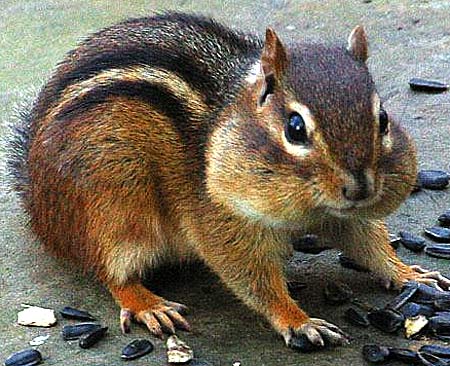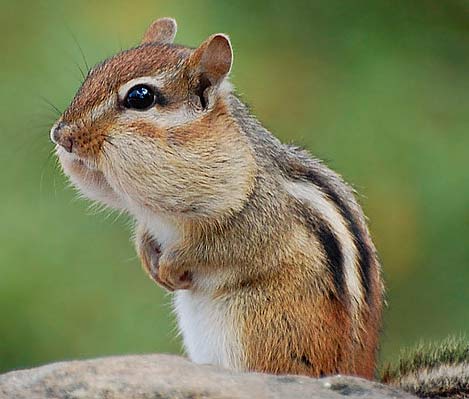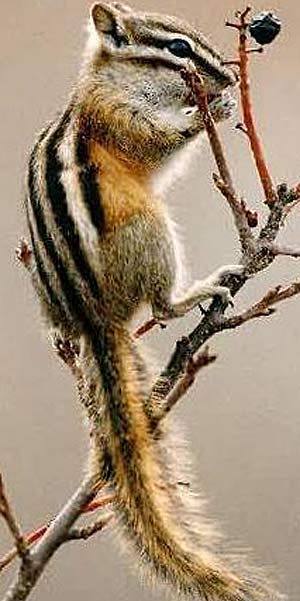Eastern Chipmunk – Food Storage Busy Body

The eastern chipmunk is found in eastern North America living in woody areas, feeding on nuts, seeds, mushrooms and fruits during the daytime. They will eat insects, snails and bird eggs but acorns and hickory nuts are their favorites. They live a mostly solitary existence and sleep alone in their burrows at night. They are a ground dwelling species and make their burrows just below the surface with tunnels that may extend for several yards. The burrow entrances are hidden in secluded areas so that discovery by predators such as foxes, snakes and birds of prey can hopefully be avoided. You don’t want to find hungry jaws when you come out of your burrow in the morning.

When out during the day these rodents forage for food in a small territory (about 100 yards) around their burrows. Any intruders looking for food in that area will be aggressively chased away. They are larger than most chipmunks, growing to be as tall as 7.5 inches (19cm) and weighing 140g. Their most obvious feature is the pouched cheeks located inside their mouths. These pouches are used to store food. The storing of food is of primary importance in chipmunk life. They sleep through the winter in their burrows, but wake regularly to feed on the caches of food they have made during the fall. They produce 3-5 young usually in early spring, and again in summer.

Some say that chipmunks are named after the sharp chirp noise they frequently make. When they are not too busy foraging they will gather in groups to communicate, singing strings of chirp chirps back and forth to each other. Others say the word chipmunk comes from an indian word that means “the one who descends from trees headfirst”.

